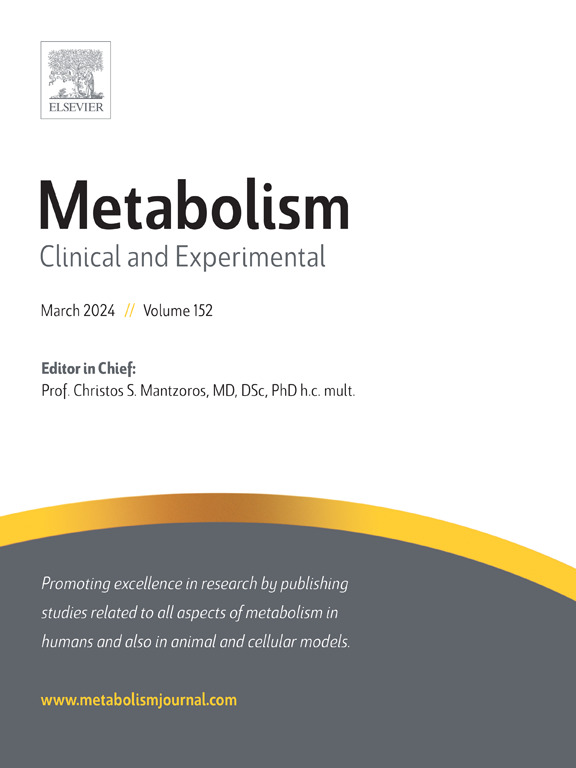Association between higher consumption of ultra-processed foods and risk of diabetes and its complications: A systematic review & updated meta-analysis
IF 10.8
1区 医学
Q1 ENDOCRINOLOGY & METABOLISM
引用次数: 0
Abstract
Background & aims
Recent epidemiologic studies on the association between higher consumption of ultra-processed foods (UPFs) and risk of incident diabetes have reported conflicting results in populations worldwide. We conducted an updated systematic review and meta-analysis to quantify the magnitude of this association.
Methods
PubMed and Embase databases were systematically searched (from 2009 to November 14, 2024) for prospective cohort studies reporting data on the association between UPF intake (defined by the NOVA classification) and the risk of incident diabetes or its complications in adults (>18 years). Meta-analysis was performed using random-effects modelling to obtain pooled hazard ratios (HRs) with 95 % confidence intervals (CIs), and the GRADE approach was applied to evaluate the certainty of evidence.
Results
We included 14 prospective cohort studies with a total of 692,508 participants. The highest UPF consumption was significantly associated with an increased risk of diabetes (n = 9 studies; HR 1.24, 95 % CI 1.14 to 1.34, I2 = 69 %) compared with the lowest UPF intake (very low certainty of evidence). Subgroup analysis showed that studies published in 2024 had a smaller effect size compared with earlier studies. There were no significant differences between subgroups based on study location, duration of follow-up, method and frequency of dietary intake assessment, and risk of bias. Sensitivity analyses did not change these findings. Each 10 % increase in total UPF consumption was associated with a 13 % (n = 4 studies; HR 1.13, 95 % CI 1.08 to 1.18, I2 = 37 %) increased risk of diabetes. Preliminary data from 4 cohort studies also suggest that high UPF consumption may be associated with complications in diabetic patients, including microvascular/cardiovascular disease, chronic kidney disease, and mortality.
Conclusion
UPF consumption is associated with a higher risk of incident diabetes and may contribute to its complications. Urgent public health efforts should prioritize the reduction of UPF consumption.

求助全文
约1分钟内获得全文
求助全文
来源期刊

Metabolism: clinical and experimental
医学-内分泌学与代谢
CiteScore
18.90
自引率
3.10%
发文量
310
审稿时长
16 days
期刊介绍:
Metabolism upholds research excellence by disseminating high-quality original research, reviews, editorials, and commentaries covering all facets of human metabolism.
Consideration for publication in Metabolism extends to studies in humans, animal, and cellular models, with a particular emphasis on work demonstrating strong translational potential.
The journal addresses a range of topics, including:
- Energy Expenditure and Obesity
- Metabolic Syndrome, Prediabetes, and Diabetes
- Nutrition, Exercise, and the Environment
- Genetics and Genomics, Proteomics, and Metabolomics
- Carbohydrate, Lipid, and Protein Metabolism
- Endocrinology and Hypertension
- Mineral and Bone Metabolism
- Cardiovascular Diseases and Malignancies
- Inflammation in metabolism and immunometabolism
 求助内容:
求助内容: 应助结果提醒方式:
应助结果提醒方式:


